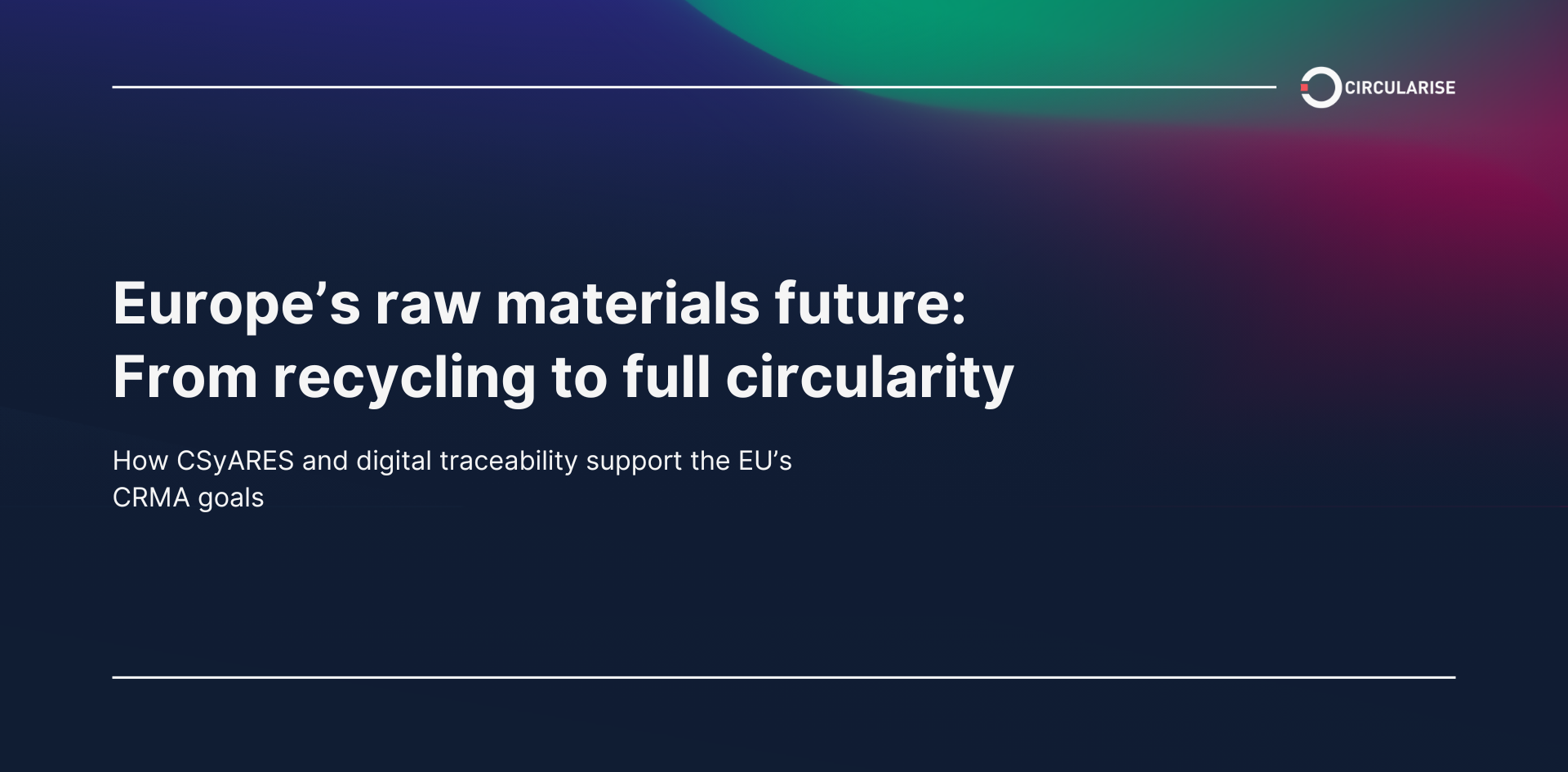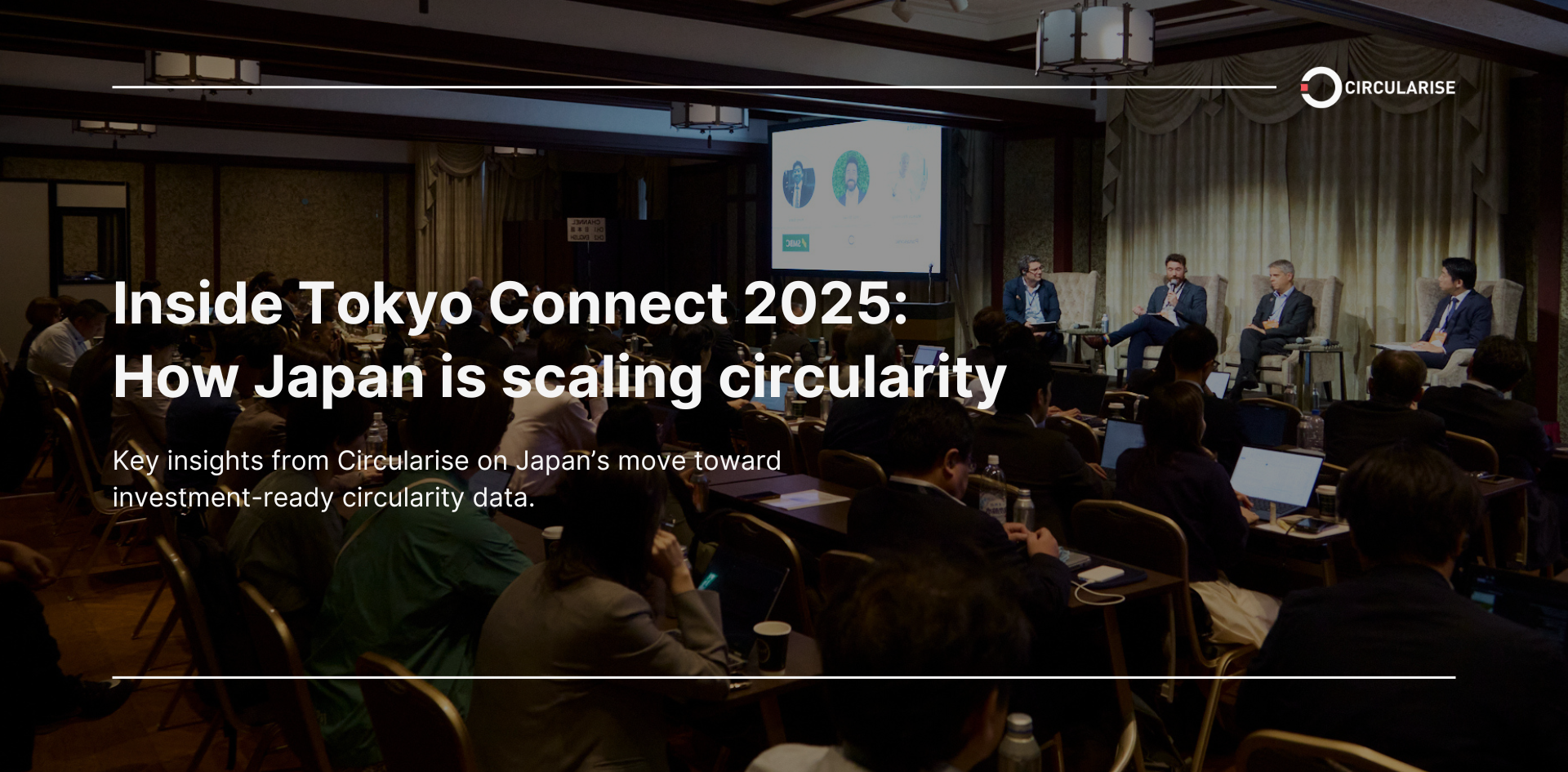Transitioning to a more circular future is no longer just an ambition. It is possible and it is necessary, too. Yet, achieving this requires new ways of working together and reaching common goals across complex supply chains.
Blockchain is a fundamental block of supply chain traceability and is sure to be one of the main enablers of the circular economy.

In a panel discussion organised by Circularise, key stakeholders from the manufacturing industry came together to discuss the way forward in “Tracing sustainable manufacturing using blockchain” and identified several important points to work on collaboratively. The session was moderated by Dr. Phil Brown, who has a birds-eye view on the topic, having spent the last few years researching collaborative innovations for the circular economy.
So, how can collaboration really drive the circular economy?
To start with, it is important to remember that supply chains come with a high level of complexity. There are multiple stakeholders involved and if they are all to commit to a more circular future, there need to be processes in place that allow them to communicate with each other in a transparent and trustworthy manner.
This is where blockchain networks come into play. While perhaps not fully understood yet, they hold great potential for the manufacturing industry and circularity. In its essence, a blockchain is a decentralised digital system that allows parties to record information in a secure and verifiable way. For supply chains, in particular, it makes it possible for stakeholders in various stages of it to describe the materials or products they deliver, without the risk of any sensitive IP becoming public.
Antoon Versteeg, Project Lead Innovation Research at Porsche and one of the panellists, knows all about the need to transition to a new way of communications across the supply chain.
“Porsches are cars with a lot of small parts, many suppliers and a very complex supply chain,” he says. “One of the things we have realised over the past few years is that the requirements from governments as well as our customers are becoming increasingly strict. They want to know more. So how do we give them access to that information? That’s an interesting challenge.”
The question here is two-fold: What information do companies like Porsche want to bring to their stakeholders and how.
For John Fox, Manager Digital Material Tracing at Covestro, a material solutions supplier, transparency is also at the heart of this discussion. He works closely together with Circularise to further develop a solution that ensures material information is easily accessible, while sensitive and proprietary details remain private.
Still, there is a key challenge to solve. For this to work on a global scale, stakeholders need to have a standardised way of communicating with each other. In other words, they need to be speaking the same language.
Breaking the silos and making sure everyone speaks the same language
Public blockchains, the type of network that Circularise is built on, are open, meaning anyone with an internet connection can join the conversation and contribute. In order for such a solution to work for entire supply chains, however, all parties have to be on the same page as to how the conversation takes place. Essentially, it provides an inclusive environment where information is easily accessible as opposed to held up in silos.
“We are interconnected and have different types of customers and companies that we are working with, so if we have silos and someone cannot join, it becomes complicated,” says Thomas Nuyts, Global Product Manager Advanced Materials at Domo Chemicals, another material provider. “Speaking a language that we all agree on is what this is about and what we need to set up.” Only then will true transparency be possible.
One thing that blockchain has revolutionised is the viability of internet protocols. “Some 20-30 years ago, at the beginning of the internet, many foundational internet protocols were being developed. Today, some of them allow us all to communicate using emails. However, due to a lack of internet-native money, all value was captured by applications and not the protocol developers,” says Mesbah Sabur, co-founder of Circularise.
“Now with blockchain we see a surge back to open protocols where communities not only build and maintain protocols, but can also financially benefit from them without compromising the openness and independence of the protocol. We need to define the Open Protocol for Supply Chain Traceability – the digital language that will enable us to communicate about sustainability in the future.”
The standardisation of protocols will become increasingly important in the future, making it possible for more and more parties to join in and communicate with each other. Smart contracts, in turn, would make supply chain processes more efficient as the owners of information will be able to create automated agreements.
There are clearly great advantages to using blockchain for enabling a more secure and transparent environment for stakeholders within the supply chain to share (sustainable) material information with each other. A question still remains, though:
How can parties know that the information in the blockchain is trustworthy?
The reliability and trustworthiness of information is a major topic of discussion, especially now that more stakeholders are looking to commit to circularity.
“Looking from the perspective of one of the biggest certifiers in the industry, we generate data by testing the products in our own premises. We look from the outside of the supply chains and so we can guarantee that the sets of data are not influenced by any parties involved,” says Juergen Henschel, General Manager and Director of Engineered Materials EMEA @ UL.
“Having said that, we need to think about smart solutions that can help transfer the information we get from the raw material supplier, being populated throughout the whole supply chain, without getting that data manipulated. We look at these sets of data and ensure that they are not being manipulated.”
For Thomas and Domo Chemicals, the challenge lies in how complete and well stored the data is. “We find it very difficult to valorise the intrinsic value that we are creating when making more sustainable materials.” The flow of information usually stops at the next customer and does not arrive at the original equipment manufacturer (OEM), he says. It is thus not available at the place where it can be truly valued.
At the end of the day, there is still a way to go until blockchain becomes the true enabler of the circular economy. Still, the first solutions are already out there, and there is an agreement among key stakeholders in the industry on the need to continue working together, create uniform standards and ensure the highest possible reliability of information.
Circularise is forging a range of partnerships across the value chain - in many sectors - to jointly envision new solutions for increased digital supply chain traceability, transparency and the circular economy.
Get in touch at circularise.com/contact and join our effort to enable a circular economy using the power of digital technologies.

Circularise is the leading software platform that provides end-to-end traceability for complex industrial supply chains. We offer two traceability solutions: MassBalancer to automate mass balance bookkeeping and Digital Product Passports for end-to-end batch traceability.





